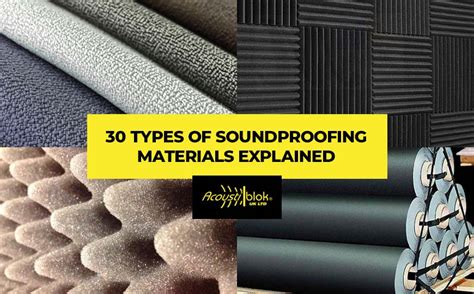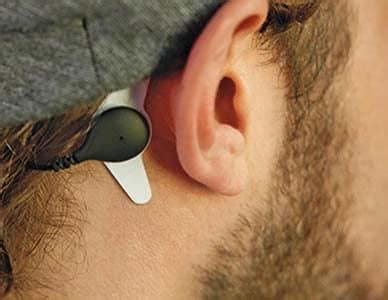Noise can be a persistent hindrance, preventing us from immersing ourselves in the world of music or focusing on essential tasks. Whether it's the bustling sounds of the city or the chatter of colleagues, finding solace in our own auditory realm can be challenging. This is where sound isolation comes into play. By employing advanced technology and innovative designs, headphones have become our invaluable companions, shielding us from the outside world and creating a personal sanctuary of sound.
How do headphones effectively shield us from the noise that surrounds us? The answer lies in the intricate mechanism of sound isolation, which aims to block external sounds and provide a pristine listening experience. Through a combination of acoustic engineering and ergonomic design, headphones have evolved into sophisticated devices that cater to our needs for both comfort and sonic immersion.
One fundamental element of sound isolation lies in the construction of the ear cups. These cups, usually made of high-quality materials such as memory foam or leather, encase the ears and form a barrier between our auditory system and the outer environment. By creating a physical barrier, the headphones minimize the amount of noise that reaches our ears, allowing us to focus on the desired audio content.
Understanding the Science behind Acoustic Insulation in Headsets

In this section, we delve into the intricacies of how headphones manage to block external sounds and provide a truly immersive audio experience. By delving into the underlying physics of acoustic insulation, we explore the key elements that contribute to sound isolation within these versatile devices.
The Importance of Ear Cups in Achieving Sound Insulation
When it comes to experiencing high-quality audio in headphones, achieving proper sound insulation is essential. A crucial element in achieving this isolation is the design and construction of the ear cups.
The ear cups, also known as ear pads or cushions, play a significant role in creating a seal around the ears to prevent external sound from entering and minimizing sound leakage. This seal ensures that you enjoy an immersive listening experience by minimizing distractions from outside noise.
One important factor to consider when it comes to ear cups is their material. The choice of material can affect the overall effectiveness of sound isolation. Different materials, such as memory foam, leather, or synthetic materials, have varying levels of acoustic properties. Some materials may provide better isolation by absorbing and dampening environmental sounds, while others may focus on comfort without compromising the sealing properties.
Another aspect to consider is the design of the ear cups. Manufacturers incorporate various design features to enhance sound isolation. Some ear cups have an angled or contoured shape that conforms to the natural shape of the ears, improving the seal. Additionally, the size and depth of the ear cups can impact sound isolation. Larger ear cups may offer better coverage and a tighter fit, thus improving the effectiveness of isolation.
- The thickness of the ear cup padding is also worth considering. Thicker padding can help create a better seal and improve sound insulation.
- Furthermore, some ear cups include additional features such as passive noise-canceling materials or adjustable mechanisms to provide a customizable fit.
- It's important to note that the ear cups should be comfortable to wear for extended periods to ensure a pleasant listening experience.
In summary, the role of ear cups in achieving sound insulation in headphones is vital. The choice of materials, design features, and comfort factor all contribute to ensuring a superior listening experience with minimal external disturbances. Understanding the significance of ear cups can assist you in selecting headphones that meet your desired level of sound isolation.
The Impact of Headband Design on Enhancing Acoustic Immersion

When it comes to achieving optimal sound isolation in headphones, one critical factor that often goes unnoticed is the design of the headband. While the focus is typically directed towards the quality of the audio drivers and earcup padding, overlooking the importance of headband design can result in the compromise of the overall sound experience.
Maintaining a secure fit: A well-designed headband ensures a secure fit on the listener's head, effectively minimizing sound leakage and maximizing the immersion in the audio. A good fit prevent external sounds from seeping in and prevents audio leakage, allowing users to fully indulge in their chosen soundscapes.
Distributing weight evenly: Additionally, an intelligently designed headband ensures that the weight of the headphones is distributed evenly across the listener's head. This prevents discomfort or pressure points, ensuring long-lasting comfort during extended listening sessions without compromising on sound isolation.
Adjustability for individual preferences: Headbands with adjustable features cater to the diverse needs and preferences of individuals. The ability to customize the headband size ensures a snug fit for different head shapes, ensuring a close seal that effectively blocks external noise and enhances the overall audio experience.
Utilizing robust materials and cushioning: Headband designs incorporating high-quality materials and sufficient cushioning play a crucial role in boosting sound isolation. By absorbing vibrations and minimizing any potential sound leakage at the contact points, an optimized headband design helps users fully immerse themselves in their audio without any distractions.
Seamless integration with earcup technology: Finally, a well-integrated headband design complements the overall design of the headphones, ensuring seamless integration with the earcups. This synergy between the headband and the earcups further enhances the sound isolation capabilities, allowing users to experience a truly immersive audio environment.
Exploring Noise-Canceling Technology in Headphones
In this section, we will delve into the fascinating realm of noise-canceling technology found in modern headphones. By carefully manipulating sound waves, these headphones are designed to provide an immersive audio experience free from external distractions. Let us explore the intricacies of this remarkable technological advancement.
Understanding Noise-Canceling:
Noise-canceling technology is a revolutionary feature that allows headphones to actively counteract unwanted sounds, resulting in a more tranquil listening environment. By employing advanced algorithms, these headphones detect external noises and produce inverse sound waves that effectively cancel out the incoming sound waves, reducing the overall impact on your auditory experience.
Active vs. Passive Noise-Canceling:
There are two main types of noise-canceling technologies: active and passive. Passive noise-canceling involves the physical design of the headphones, such as cushioning and sealing, to block out external sounds to a certain extent. On the other hand, active noise-canceling goes a step further by utilizing microphones to capture external noises and generate counteractive sound waves, resulting in a more effective cancellation of unwanted sounds.
The Role of Microphones:
Microphones play a crucial role in noise-canceling headphones, as they capture the ambient sounds around the user. These microphones then send the captured sound information to the headphone's internal circuitry, which analyzes the frequency and amplitude of the incoming sounds. Based on this analysis, the headphones generate inverse sound waves that are emitted through the speakers, effectively canceling out the external noises in real-time.
The Benefits of Noise-Canceling Technology:
Noise-canceling technology offers numerous advantages to headphone users. It enables a more immersive listening experience by minimizing disruptions from external noises, allowing you to focus on the nuances of your audio content. It also reduces the need to increase volume levels to drown out background sounds, which can be beneficial for preserving your hearing health. Whether you are working in a noisy environment or simply seeking tranquility during your daily commute, noise-canceling headphones can provide a sanctuary of sonic serenity.
Conclusion:
As technology continues to evolve, noise-canceling technology in headphones has become an integral feature for many audio enthusiasts. By combining innovative algorithms, microphones, and speaker systems, these headphones create an immersive and isolated listening experience, minimizing external distractions. Whether you are a music lover, frequent traveler, or professional seeking a quiet workspace, noise-canceling technology in headphones is a game-changer, elevating your audio experience to new heights.
[MOVIES] [/MOVIES] [/MOVIES_ENABLED]FAQ
What is sound isolation in headphones?
Sound isolation in headphones refers to the ability of the headphones to block out external noise, allowing the user to have a more immersive and focused listening experience.
How does sound isolation work in headphones?
Sound isolation in headphones is achieved through the use of various techniques such as noise cancellation, passive noise isolation, and the design of the headphone cups or earbuds. These techniques aim to reduce or eliminate external noise by creating a physical barrier between the user's ears and the outside world.
What is the difference between noise cancellation and passive noise isolation?
Noise cancellation actively eliminates external noise by using microphones to pick up ambient sounds and then producing sound waves that cancel out those noises. Passive noise isolation, on the other hand, relies on the physical design of the headphones to block out external noise by creating a seal around the ears or in the ear canal.
Are all headphones capable of good sound isolation?
No, not all headphones are capable of good sound isolation. Some headphones are designed specifically for sound quality without much consideration for noise isolation. It is important to look for headphones that have features like noise cancellation or a closed-back design if sound isolation is a priority.
What are the benefits of sound isolation in headphones?
Sound isolation in headphones has several benefits. Firstly, it allows for a more immersive and focused listening experience, as external noise is minimized. Secondly, it can help protect the user's hearing by allowing them to listen at lower volumes due to the reduction in external noise. Lastly, it is particularly useful in environments with a lot of background noise, such as airplanes or busy offices, as it enables the user to enjoy their music or audio without distractions.




